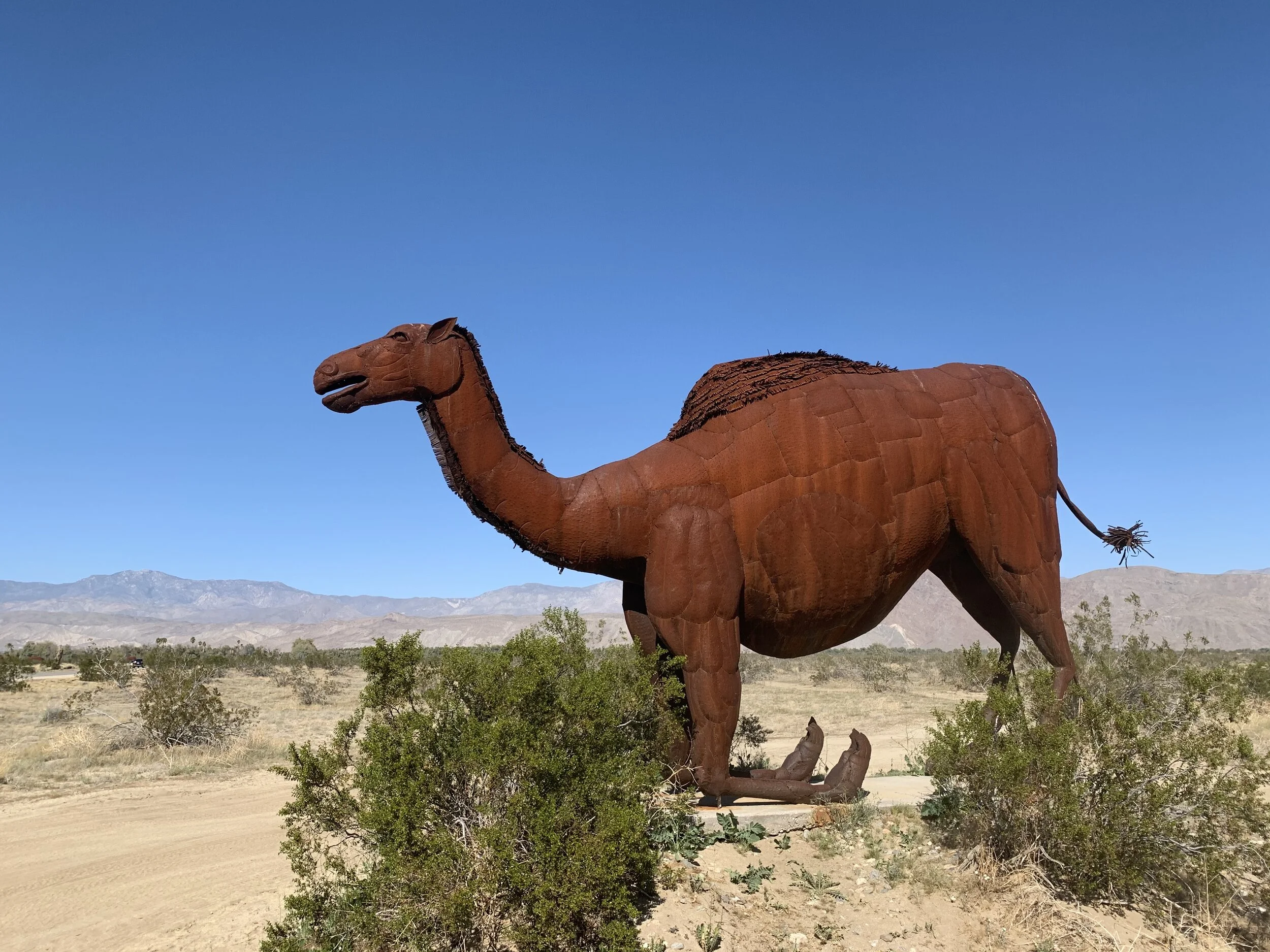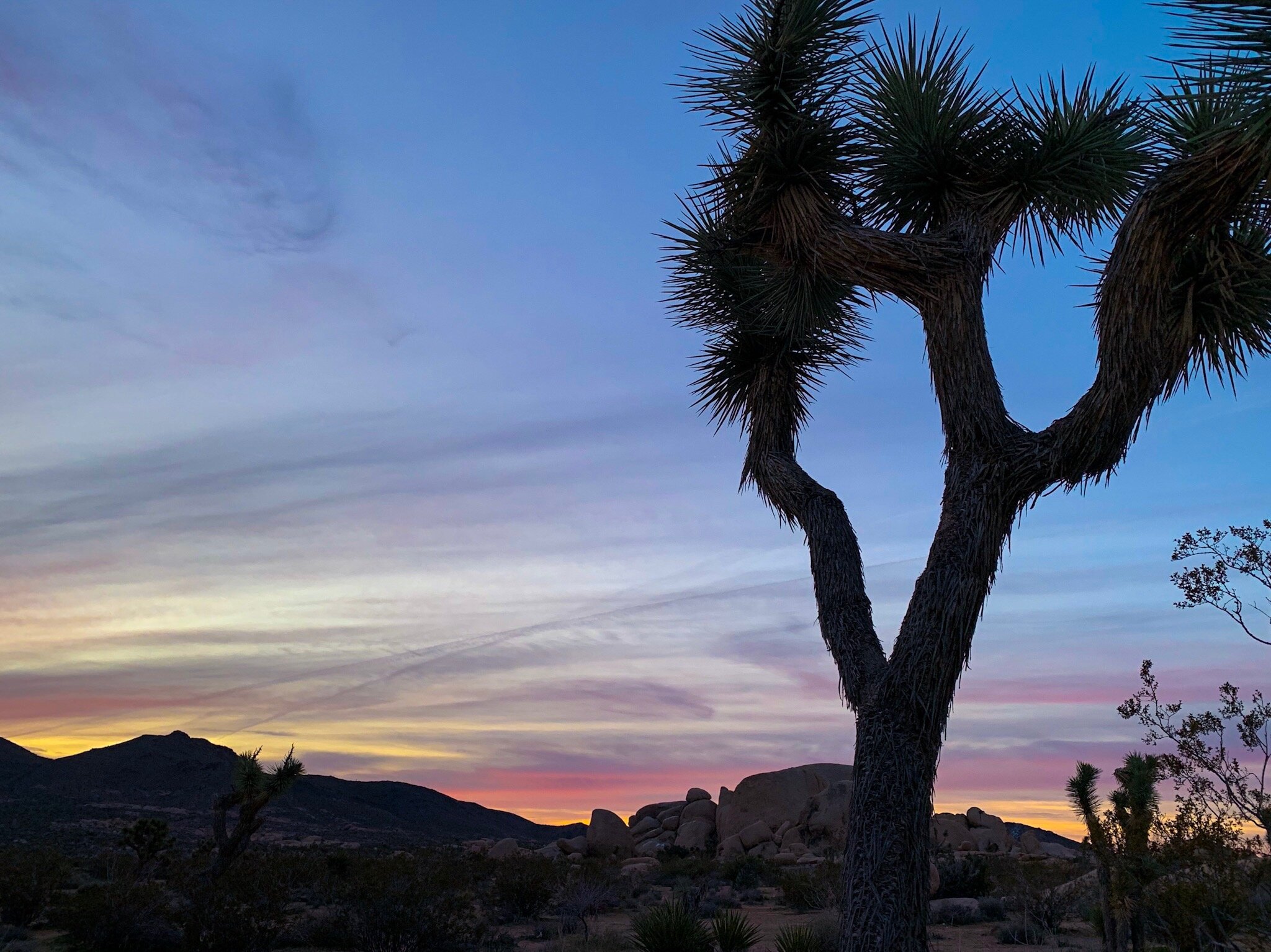I’ve now pretty much finished Southern California. It’s where I grew up and went to school, so I’ve got a pretty good gauge of its geography. And on top of that, there’s basically no major destination in the southern portion of the state that I haven’t traveled to. There are a few main landscapes in Southern California: from mountains to beaches to deserts. They say it’s one of the only places you can go surfing in the morning and skiing in the afternoon. But a large portion of Southern California is taken up by desert, and a few of these deserts are very worth your visit, while some are just transitional spaces between states (I’m looking at you, Mojave). This is a short guide to the deserts worth seeing, why you should visit, and what there is to do there.
Joshua Tree National Park
Anza Borrego Desert State Park
Anza Borrego Desert State Park is actually known for its correlation with the famous California Wildflower Superbloom that happens in spring seasons that follow winters where we get a lot of rain. While a superbloom is unlikely in 2020, this desert is still worth your visit. It’s the largest state park in the contiguous United States, and touches three counties: San Diego, Imperial, and Riverside. There are also a lot of free campgrounds in Anza Borrego, and you do not need to pay the park entrance fee ($10) to stay in them overnight. You’ve likely heard about Anza Borrego from the Sky Art Sculptures: giant metal sculptures built to work with the landscape or look like they’re a part of it. These sculptures invoke feelings of whimsy, and bring you back to the most childlike parts of your imagination (pictured below).
The Serpent, Anza Borrego Desert State Park
Joshua Tree National Park
I’ve talked about Joshua Tree a lot on this blog, and even have a full guide to the park available HERE, but it needs to be on this list because it’s one of the main desert attractions in Southern California. Home to over 2 million Joshua Trees, a member of the agave family, Joshua Tree National Park is known for rock climbing, photography, and general exploring. It’s a huge park with plenty to do for every kind of traveler. Going with kids? Check out Jumbo Rocks Campground, Skull Rock, and Arch Rock. Adventure Seeker? Go find the Hall in the Hall or Horrors, summit Ryan Mountain, or go scrambling on one of the many rock formations. Just trying to take some good pictures for the ‘gram? Head over to the Cholla Cactus Gardens or stop in any roadside pullout for a good photoshoot with some J Trees! There’s also tons to do in the area, from stopping and grabbing a bomb vegan sandwich and getting some work done at Frontier Café to taking a self-guided tour with The Secret Tours.
Joshua Tree National Park: Sunrise from Belle Campground
Slab City, The Salton Sea, and Salvation Mountain
These spots are important for any SoCal desert tourist, but I honestly can’t see myself going back anytime soon. Salvation Mountain is a famous piece of desert installation art in the middle of Slab City, a strange desert town. It’s definitely worth seeing, and while you’re there, make sure you visit East Jesus—another space for desert art. As for where to stay during your time here, I highly recommend the Salton Sea. It’s close by, but not so close that you’ll feel the general weirdness of the Slabs. The Salton Sea is a huge body of water with a strange history, and the beach is made of fish bones. Just beware—the Salton Sea doesn’t smell its best!
Salvation Mountain, Slab City, CA
The SoCal desert is an incredible landscape that shouldn’t be missed. So many people say they’re coming to California and stop their journey south at Los Angeles, when really, there’s so much to be seen. The desert lies inland, and will give you a much broader scope of what California is made of. The desert is a place of extremes, so you might want to make sure you stock up on water, but also bring your 0 degree sleeping bag with you (don’t have one? Check out my favorite bag HERE!). But above all, make sure you take plenty of pictures—the desert has a certain beautiful magic to it.




